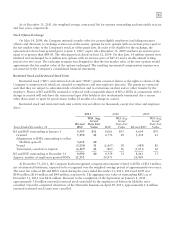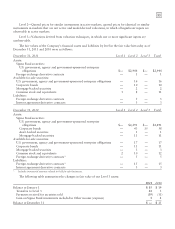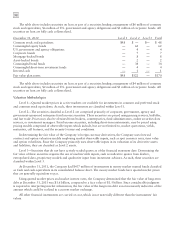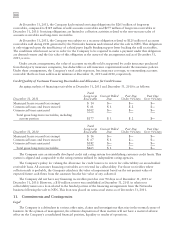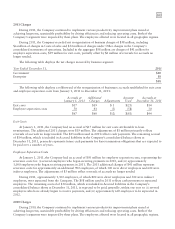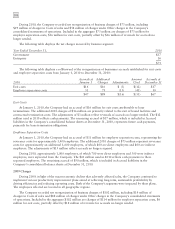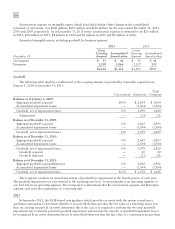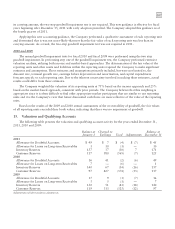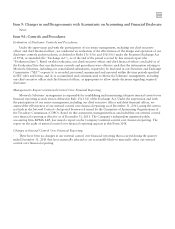Motorola 2011 Annual Report Download - page 105
Download and view the complete annual report
Please find page 105 of the 2011 Motorola annual report below. You can navigate through the pages in the report by either clicking on the pages listed below, or by using the keyword search tool below to find specific information within the annual report.
99
10. Long-term Customer Financing and Sales of Receivables
Long-term Customer Financing
Long-term receivables consist of trade receivables with payment terms greater than twelve months, long-term
loans and lease receivables under sales-type leases. Long-term receivables consist of the following:
December 31 2011 2010
Long-term receivables $177 $265
Less allowance for losses (10) (1)
167 264
Less current portion 130 (13)
Non-current long-term receivables, net $37 $251
The current portion of long-term receivables is included in Accounts receivable and the non-current portion of
long-term receivables is included in Other assets in the Company’s consolidated balance sheets. Interest income
recognized on long-term receivables for the years ended December 31, 2011, 2010 and 2009 was $15 million,
$14 million and $2 million, respectively.
Certain purchasers of the Company’s products and services may request that the Company provide long-term
financing (defined as financing with a term of greater than one year) in connection with the sale of products and
services. These requests may include all or a portion of the purchase price of the products and services. The
Company’s obligation to provide long-term financing may be conditioned on the issuance of a letter of credit in
favor of the Company by a reputable bank to support the purchaser’s credit or a pre-existing commitment from a
reputable bank to purchase the long-term receivables from the Company. The Company had outstanding
commitments to provide long-term financing to third parties totaling $138 million at December 31, 2011, compared
to $333 million at December 31, 2010 (including $168 million at December 31, 2010, relating to discontinued
operations). Of the $333 million at December 31, 2010, $27 million was supported by letters of credit or by bank
commitments to purchase long-term receivables at December 31, 2010, (including $25 million at December 31,
2010, related to discontinued operations). The majority of the outstanding commitments at December 31, 2011 are
related to a variety of U.S. state and local government customers.
The Company retained the funded portion of the financing arrangements related to the Networks business
following the sale to NSN, which totaled a net amount of $127 million at December 31, 2011. These receivables
have an allowance for uncollectable accounts of $10 million. As of December 31, 2011, $37 million of net
receivables are classified as long-term. The remainder of the retained receivables are current and included in
Accounts receivable, net.
Sales of Receivables
From time to time, the Company sells accounts receivable and long-term receivables on a non-recourse basis to
third parties under one-time arrangements while others are sold to third parties under committed facilities that
involve contractual commitments from these parties to purchase qualifying receivables up to an outstanding
monetary limit. Committed facilities may be revolving in nature and, typically, must be renewed annually. The
Company may or may not retain the obligation to service the sold accounts receivable and long-term receivables.
The Company had no revolving sales facilities as of December 31, 2011. At December 31, 2010, the Company
had a $200 million committed revolving credit facility for the sale of accounts receivable, which was fully available.
The $200 million facility matured in December 2011 and was not renewed by the Company. The Company had no
significant committed facilities for the sale of long-term receivables at December 31, 2011 and 2010, respectively.
The following table summarizes the proceeds received from non-recourse sales of accounts receivable and long-
term receivables for the years ended December 31, 2011, 2010 and 2009.
Years Ended December 31 2011 2010 2009
Cumulative annual proceeds received from one-time sales:
Accounts receivable sales proceeds $8$30 $46
Long-term receivables sales proceeds 224 67 72
Total proceeds from one-time sales 232 97 118
Cumulative annual proceeds received from sales under committed facilities —70 234
Total proceeds from receivables sales $232 $167 $352






